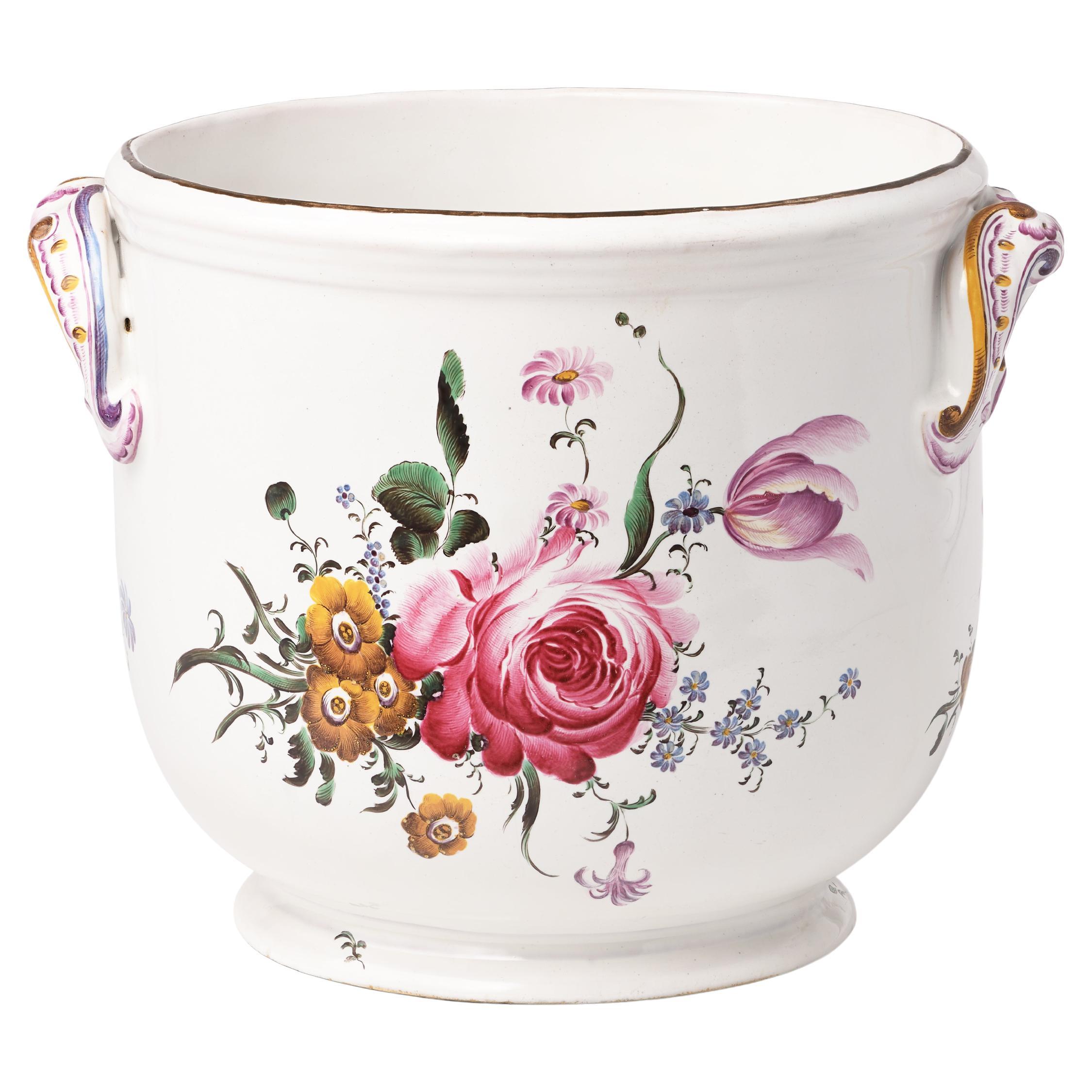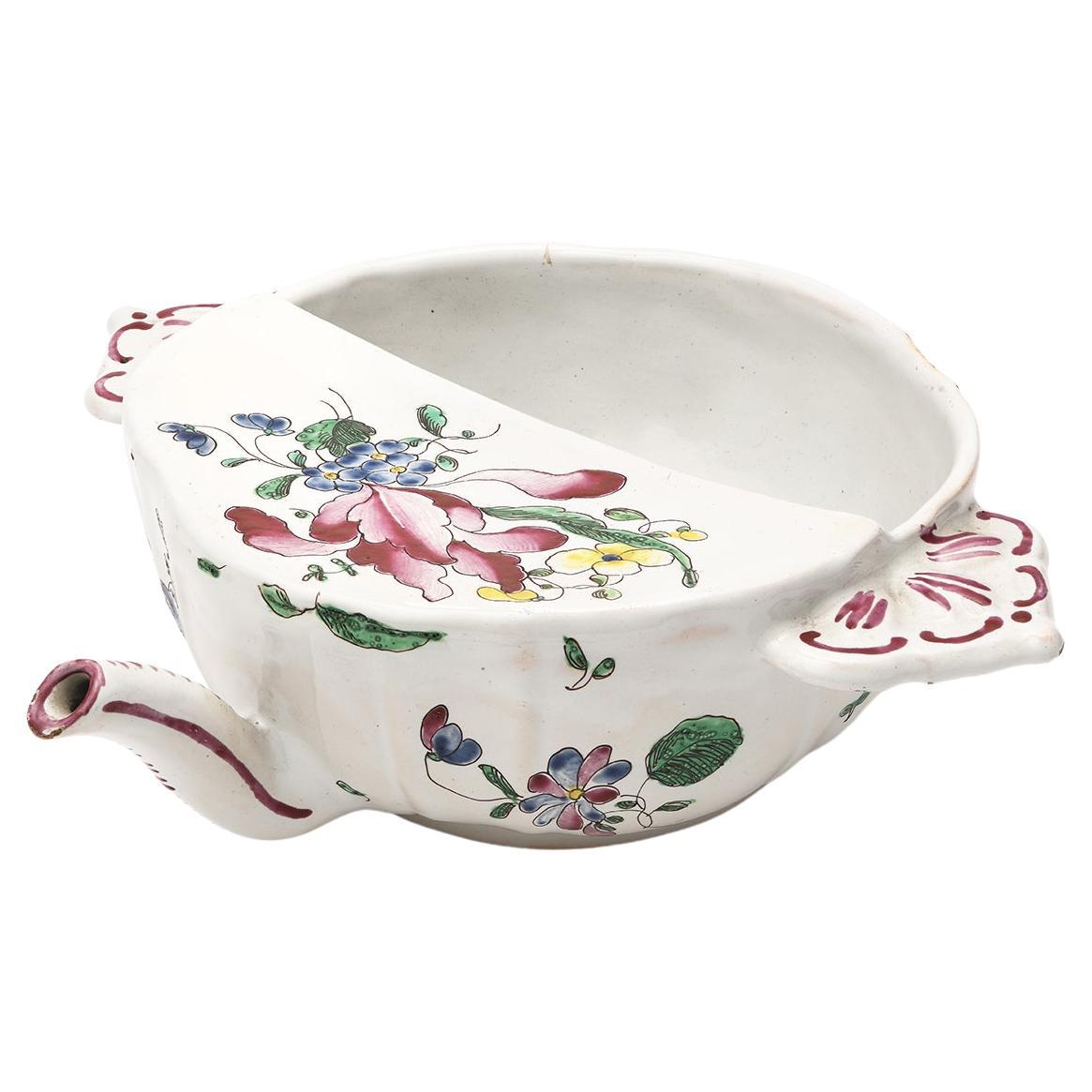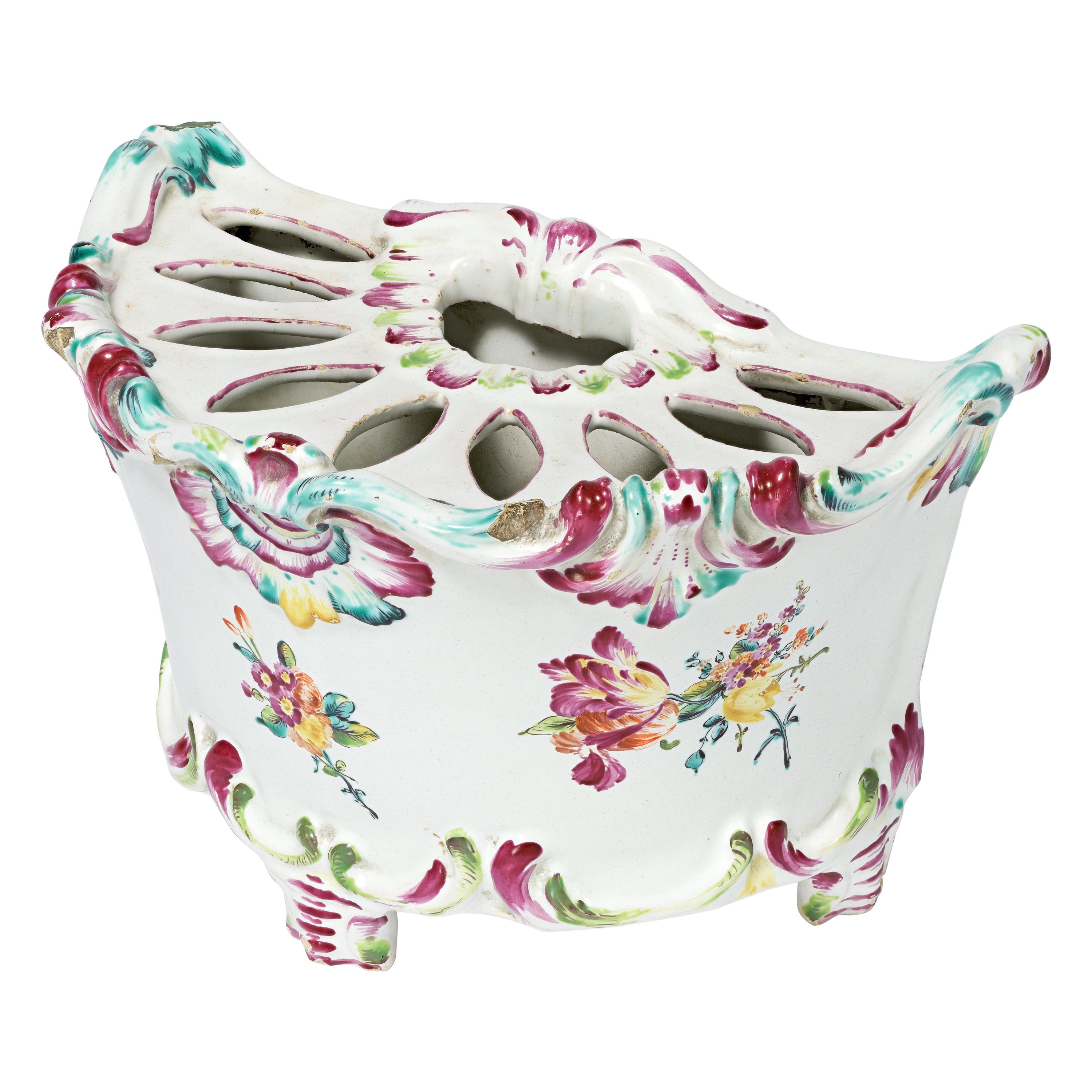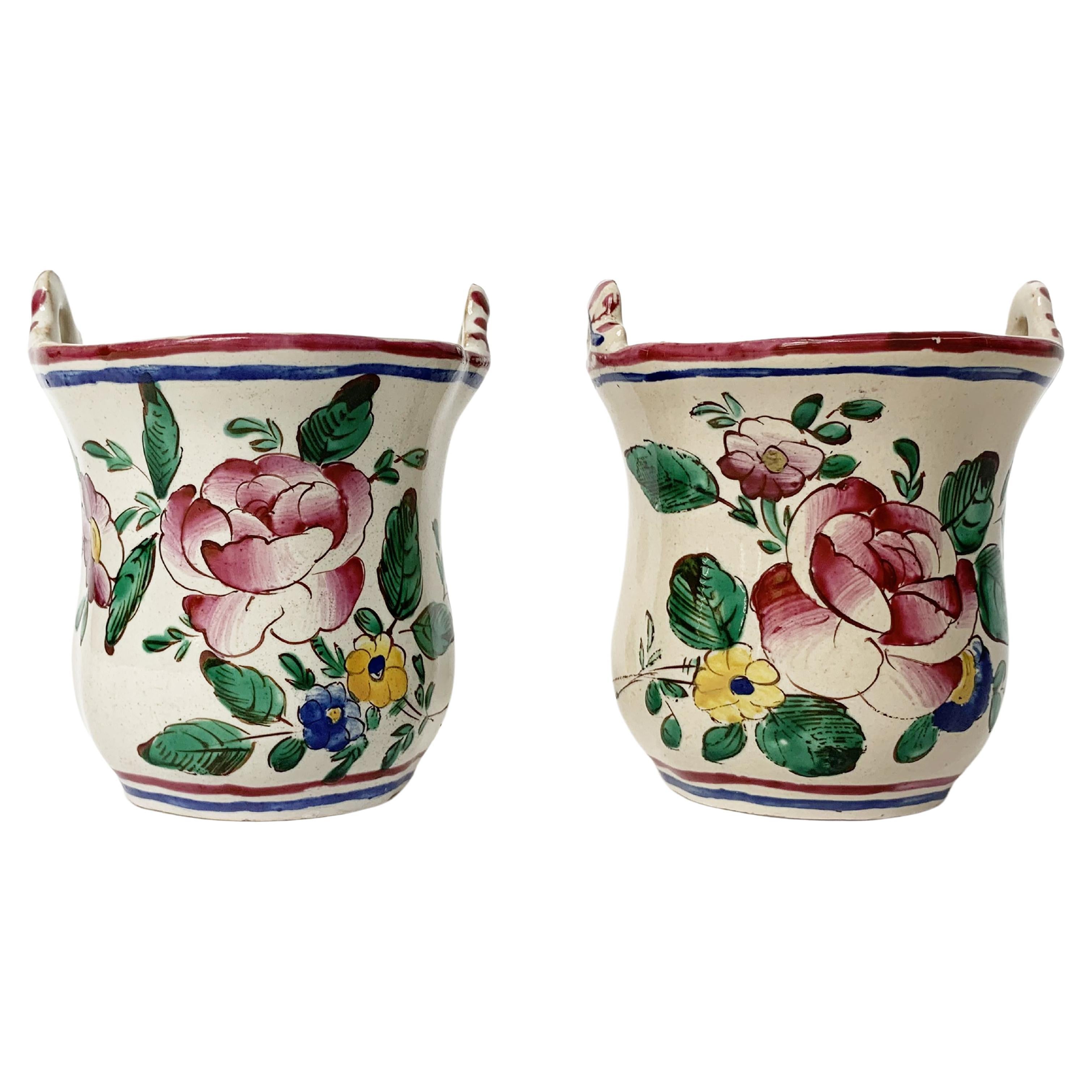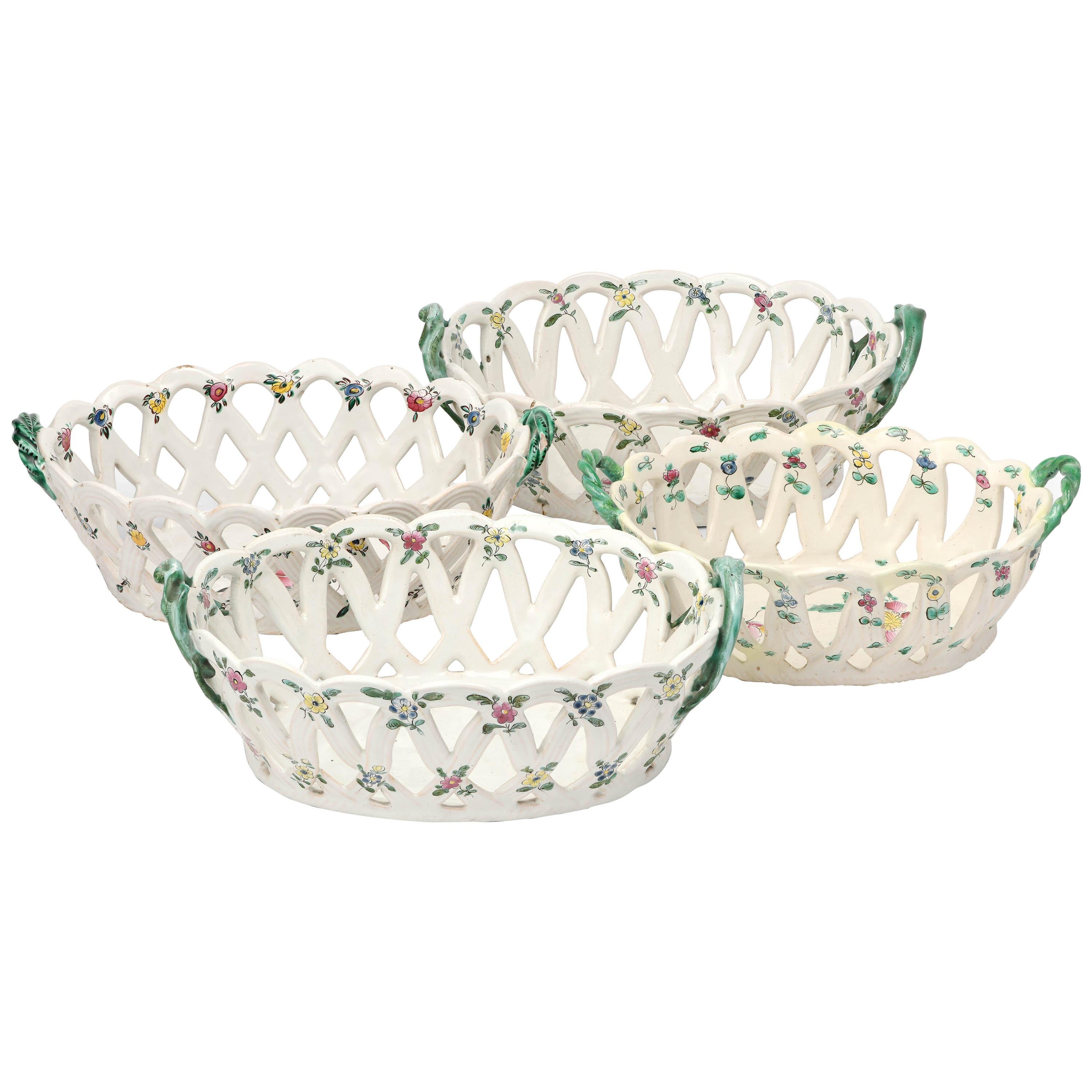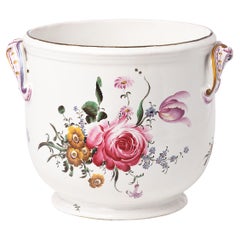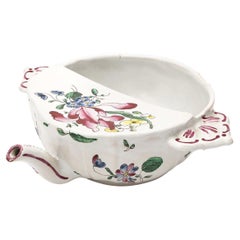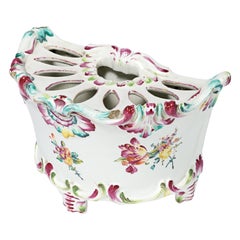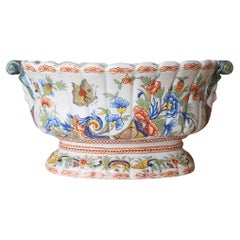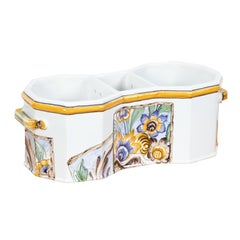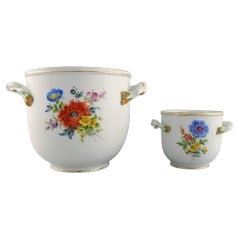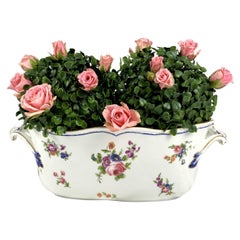Items Similar to Antique Italian Maiolica Coolers Pasquale Rubati Manufacture Milan, 1770 Circa
Video Loading
Want more images or videos?
Request additional images or videos from the seller
1 of 22
Antique Italian Maiolica Coolers Pasquale Rubati Manufacture Milan, 1770 Circa
$5,907.26per set
£4,427.86per set
€5,000per set
CA$8,115.58per set
A$9,060.28per set
CHF 4,747.45per set
MX$110,906.68per set
NOK 60,292.64per set
SEK 56,848.31per set
DKK 38,061.82per set
Shipping
Retrieving quote...The 1stDibs Promise:
Authenticity Guarantee,
Money-Back Guarantee,
24-Hour Cancellation
About the Item
Assortment of bottle and glass coolers in Maiolica.
Pasquale Rubati manufacture
Milan, circa 1770
Maiolica polychrome decorated “a piccolo fuoco” (third fire)
a - Bottle cooler
5.91 in x 5.91 in diameter (15 x 15 cm )
Weight: 1.86 lb (845 g)
b - Bottle cooler
6.89 x 7.87 in diameter (17,5 x 20 cm)
Weight: 2.09 lb (948 g)
c - Pair of glass-cooler vases
3.94 x 3.94 in diameter (10 x 10 cm)
Weight: 1.43 lb (650 g)
Good state of conservation:
a - some chipping from use on the edge;
a - two fêlures covered on the edge;
c - one has deep chippings on the edge and the other a subtle fêlure.
Two Majolica factories were active in Milan in the 18th century. The first, starting from 1745, was owned by Felice Clerici; the other one by Pasquale Rubati from 1756. Rubati was in competition with Felice, whose worker he had been prior to opening his own workshop. On his death in 1796, the business was continued for a few more years by his son Carlo.
Recent studies have recognized Pasquale Rubati's contribution as the creator of "Strasbourg-style" decorations with their particularly joyful depictions. This style had previously been attributed to the Lodi manufacturers. These works here, however, are a clear example of this production.
The Majolica containers have different sizes, a cylindrical shape and rest on a low foot ring. The two largest are completed by handles in the shape of a zoomorphic mask with wide open jaws, while the smaller ones have handles applied with an anthropomorphic mask.
All the works are characterized by elegant floral decoration.
The two twin glass coolers show bunches of flowers centered around a main corolla, a rose or a peony paired with a tulip, from which extend thin flowering branches; one of these, with a small yellow flower with several petals and smaller florets with yellow and pink petals, is characteristic of the Pasquale Rubati manufacture in Milan around 1770. The floral decoration is made in polychrome small fire with a main flower bouquet surrounded by smaller flowering branches. The handles are shaded purple.
The two bottle coolers show similar decoration in the choice of the main flowers, but different stylistic execution: more accurate and defined, in the smaller one, with a purple shaded mask; in the other, a decoration seemingly more impulsive and sincere, but with greater expressiveness and a greater infusion of subject matter, that suggests the intervention of an expert hand, more accustomed to Maiolica decoration, more detached from the academic choices, more characteristic of porcelain decoration. This vase shows handles decorated in Savy green with the mouth shaded in yellow. Vases of this type are quite rare; for the morphology see a similar work with different decoration preserved in Milan, at Castello Sforzesco and published by R. Ausenda, Museo d’Arti Applicate, Le Ceramiche, Tomo II, Milano 2001, p. 291 n. 307.
- Creator:Pasquale Rubati (Manufacturer)
- Dimensions:Height: 6.89 in (17.5 cm)Diameter: 7.88 in (20 cm)
- Sold As:Set of 4
- Style:Rococo (Of the Period)
- Materials and Techniques:Maiolica,Glazed
- Place of Origin:
- Period:1770-1779
- Date of Manufacture:circa 1770
- Condition:Refinished. Minor structural damages. Minor fading. Good state of conservation: a - some chipping from use on the edge; a - two fêlures covered on the edge; c - one has deep chippings on the edge and the other a subtle fêlure.
- Seller Location:Milano, IT
- Reference Number:1stDibs: LU4352221441692
About the Seller
4.3
Vetted Professional Seller
Every seller passes strict standards for authenticity and reliability
Established in 1860
1stDibs seller since 2018
21 sales on 1stDibs
Associations
International Confederation of Art and Antique Dealers' Associations
- ShippingRetrieving quote...Shipping from: Milano, Italy
- Return Policy
Authenticity Guarantee
In the unlikely event there’s an issue with an item’s authenticity, contact us within 1 year for a full refund. DetailsMoney-Back Guarantee
If your item is not as described, is damaged in transit, or does not arrive, contact us within 7 days for a full refund. Details24-Hour Cancellation
You have a 24-hour grace period in which to reconsider your purchase, with no questions asked.Vetted Professional Sellers
Our world-class sellers must adhere to strict standards for service and quality, maintaining the integrity of our listings.Price-Match Guarantee
If you find that a seller listed the same item for a lower price elsewhere, we’ll match it.Trusted Global Delivery
Our best-in-class carrier network provides specialized shipping options worldwide, including custom delivery.More From This Seller
View AllMaiolica Bottle Cooler Joseph Hannong, Strasbourg France, circa 1771
By Joseph Hannong
Located in Milano, IT
Bottle cooler
Manufacture Joseph Hannong
Strasbourg, France, circa 1771
Maiolica polychrome decorated “a piccolo fuoco” (third fire)
It measures 7.40 in in height x 9.64 in diam...
Category
Antique 1770s French Rococo Vases
Materials
Maiolica
Ancient Maiolica Cup, Rubati Manufacture, Milan, Circa 1770 - 1780
By Pasquale Rubati
Located in Milano, IT
Sick cup
Pasquale Rubati Manufacture
Milan, Circa 1770 - 1780
Maiolica decorated in polychrome “a piccolo fuoco” (third fire)
It measures: h 2.36 x 7.4 x 7.87 (h 6 x 19 x 20 cm)
...
Category
Antique 1770s Italian Rococo Ceramics
Materials
Maiolica
Rococo Italian Maiolica Flower Pot Pasquale Rubati, Milano, 1770 circa
By Pasquale Rubati
Located in Milano, IT
Maiolica flower pot “a mezzaluna” with support feet
decorated with little bunches of flowers
Pasquale Rubati Factory
Milan, circa 1770
5.5 in X ...
Category
Antique 1770s Italian Rococo Ceramics
Materials
Maiolica
Small Maiolica Flower Pots, Ferretti Manufacture, Lodi, circa 1770-1780
By Antonio Ferretti
Located in Milano, IT
Two maiolica flower pots
Antonio Ferretti Manufacture
Lodi, Circa 1770 - 1780
Maiolica polychrome decorated “a piccolo fuoco” (third fire)
The...
Category
Antique 1770s Italian Rococo Ceramics
Materials
Maiolica
Italian Maiolica Cup Ferretti Lodi, circa 1770 - 1780
By Antonio Ferretti
Located in Milano, IT
Maiolica puerperal cup
Antonio Ferretti Manufacture
Lodi, Circa 1770 - 1780
Maiolica polychrome decorated “a piccolo fuoco” (third fire).
It measures: 4.3 x 6.8 x 5.3 in (11 x 17,5 x 13,5 cm)
Weight: 0.78 lb (358 g)
State of conservation: some closed pass-through fêlures on the cup, barely visible on the outside. Some use chips on the edge of the lid, two of which are more marked.
From about the mid-sixteenth century, the puerperal soup tureen or puerperal cup became one of the most popular wedding gifts in central Italy. As an auspicious symbol, it replaced the birth table (“desco da parto”) which, on the occasion of high-ranking marriages, from the thirteenth century, had been painted by famous artists, especially in Tuscany.
In France this same tureen is called "écuelle de mariée", as it is given to spouses as a sign of fertility.
During the eighteenth century this custom spread even outside Italy to all social levels. Depending on availability and rank, it was made of different materials: precious metals, maiolica, porcelain, glass, pewter, etc.
Beginning in the mid-twentieth century, the custom of this symbolic homage gradually disappeared, although famous designers such as Gio Ponti and Giuseppe Gariboldi, even as recently as the 1940s, revisited a model of a small puerperal soup bowl for the Ginori and, also in Italy in 1940, in a national competition for young potters, one of the themes of the test was indeed a modern model of a puerperal cup as an auspicious gift.
This particular cup was also called a "service cup" or "puerperal vase" or "stuffed cup" - the windows were sealed with straw to prevent drafts of air for women in labor.
In the eighteenth century the line of the puerpera cup was simplified, so much so that it took the form of a small tureen with two handles - the typical broth cup...
Category
Antique 1770s Italian Rococo Ceramics
Materials
Maiolica
Two Pairs of Italian Maiolica Baskets, circa 1780
By Antonio Ferretti
Located in Milano, IT
Two pairs of maiolica baskets
Antonio Ferretti Manufacture
Lodi, circa 1770-1790
Maiolica polychrome decorated “a piccolo fuoco” (third fire).
Measures: A) Height 3.54 x 6.69 x 9.84 in (9 x 17 x 25 cm);
B) Height 3.93 x 7.48 x 11.02 in (10 x 19 x 28 cm).
Total weight 4.85 lb (2.200 kg)
State of conservation:
A) One of the smaller baskets has some areas of restoration, the other slight chipping from use;
B) One of the larger baskets is intact and the other shows a clearly glued break.
The mold with which the baskets were forged simulates a wicker weave.
The two larger works have high, vertical walls, with branch-shaped handles penetrating the weave. The painted decorations, small polychrome flowers applied only externally, highlight the points where the weaves intersect.
The decision to leave the center of the basket devoid of decoration is highly unusual, but given the size and complexity of the shape, as well as the quality of the enamel, it is possible to hypothesize that it represents a precise choice in manufacturing or for a particular client.
The two smaller baskets have small, twisted handles and, on the outside, reproduce more decisively the characteristic wicker weave, obtained through thin molded lines. The interior exhibits a rich, typical decoration of naturalistic flowers: a bunch centered around a main flower and secondary stems accompanied by small “semis”. The exterior of these works is also adorned with small little flowers where the weaves intersect.
The size and morphological characteristics of the baskets confirm their attribution to the Lodi factory of Antonio Ferretti between 1770 and 1790, during its most successful period; by this point his original reworking of the "Strasbourg" decoration, known as "old Lodi", had achieved great fame even outside Italy.
This decorative choice represented a strong point of the Lodi factory, which established itself thanks to the vivid nature of the colors made possible by the introduction of a new technique perfected by Paul Hannong in Strasbourg and which Antonio Ferretti introduced in Italy. This production process, called “piccolo fuoco” (third fire), allowed the use of a greater number of colors than in the past; in particular, the purple of Cassius, a red made from gold chloride, was introduced. Its use allowed for many more tones and shades, from pink to purple.
The Ferretti family had started their maiolica manufacturing business in Lodi in 1725.
The forefather Simpliciano had started the business by purchasing an ancient furnace in 1725 and, indeed, we have evidence of the full activity of the furnaces from April of the same year (Novasconi-Ferrari-Corvi, 1964, p. 26 n. 4). Simpliciano had started a production of excellence also thanks to the ownership of clay quarries in Stradella, not far from Pavia. The production was so successful that in 1726 a decree of the Turin Chamber came to prohibit the importation of foreign ceramics, especially from Lodi, to protect internal production (G. Lise, La ceramica a Lodi, Lodi 1981, p. 59).
In its initial stages, the manufacture produced maolicas painted with the “a gran fuoco” (double fire) technique, often in turquoise monochrome, with ornamentation derived from compositional modules in vogue in Rouen in France. This was also thanks to the collaboration of painters like Giorgio Giacinto Rossetti, who placed his name on the best specimens next to the initials of the factory.
In 1748 Simpliciano made his will (Gelmini, 1995, p. 30) appointing his son Giuseppe Antonio (known as Antonio) as universal heir. After 1750, when Simpliciano passed away, Antonio was directly involved in the maiolica factory, increasing its fortunes and achieving a reputation on a European level. Particularly important was the aforementioned introduction in 1760 of the innovative “a piccolo fuoco” (third fire) processing, which, expanding the ornamental repertoire with Saxon-inspired floral themes, could commercially compete with the German porcelains that had one of its most renowned offerings in the naturalistic Deutsche Blumen. Antonio Ferretti understood and promoted this technique and this decoration, proposing it in a fresher and more corrective version, less linked to botanical tables...
Category
Antique 1770s Italian Neoclassical Ceramics
Materials
Maiolica
You May Also Like
Antique Faience Wine Cooler or Jardiniere. French 19th Century
Located in St Annes, Lancashire
Wonderful pottery wine cooler
Hand painted decoration
Factory mark on the underside ( not identified )
Condition commensurate with the age of the piece. A few minor chips seen in ...
Category
Antique Late 19th Century English Renaissance Ceramics
Materials
Pottery
Faïence Tiffany & Co Wine Cooler Hand Painted with Floral Motifs in France
By Tiffany & Co.
Located in Atlanta, GA
A faïence Tiffany & Co. wine cooler from the 20th century, hand-painted in France. Created in France for Tiffany & Co, this faïence wine cooler features an oblong shape made of three different compartments. Showcasing a floral décor on the sides and flanked with petite handles, the cooler is marked "Hand Painted in France for Tiffany and Co...
Category
20th Century French Wine Coolers
Materials
Faience
Meissen Wine Cooler and Vase in Hand-Painted Porcelain with Flowers
Located in København, Copenhagen
Meissen wine cooler and vase in hand-painted porcelain with flowers and gold edge. Handles modelled as branches. Early 20th century.
Measures: Lar...
Category
Early 20th Century German Porcelain
Materials
Porcelain
18th Century Sevres Porcelain Bottle Cooler Hand-Painted France 1773-1782
By Manufacture Nationale de Sèvres
Located in Katonah, NY
Sèvres was the royal factory of Louis XV and Louis XVI, Kings of France from 1715-1793.
The Sèvres factory was known to have the best painters and gilders in 18th-century France.
This stunning Sèvres 18th...
Category
Antique Late 18th Century French Porcelain
Materials
Porcelain
French Faience Jardiniere Desvres, circa 1900
By Desvres
Located in Austin, TX
French Desvres faience jardinière painted with flowers, circa 1900. Marked on base.
Minor wear.
Category
Antique Early 1900s French French Provincial Planters, Cachepots and Jar...
Materials
Faience
Pair of French Porcelain Wine Coolers, Sevres, circa 1776
By Manufacture Nationale de Sèvres
Located in New York, NY
Pair of French porcelain wine coolers sevres, circa 1776. Painted by Etienne Evans and gilded by Francois Baudouin.
Category
Antique 1770s French Vases
Materials
Porcelain
More Ways To Browse
Antique Glass Container
Antique Glass Containers
Glass Tulip Flowers
Glass Peony
Tulips Porcelain
Antique Italian Porcelain Flowers
Antique Piccolo
Used Floral Coolers
18th Century Majolica
Antique Glass Tulip
G C Porcelain
1745 Glass
Tulip Vase Silver
Peony Ring
Antique Purple Glass Bottles
Antique Pink Glass Bottles
Majolica Rose Vase
Majolica Tulip
